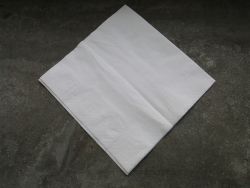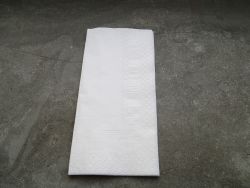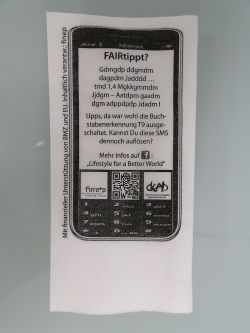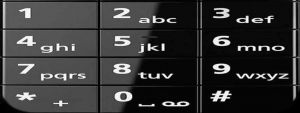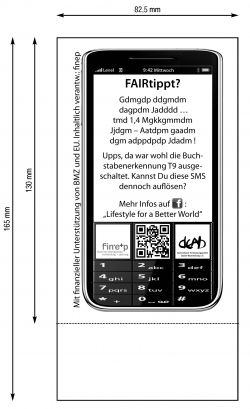Smartphone napkin on fair trade coffee
or
How to do interactive print products for Young Modern Performers ?
Cake base
1st step - What napkin will it be?
When designing a napkin with some information on development education, there are many options. Important things to consider before going into the details of design are:
- What format will the napkin have? This will determine the images that you can use and how much space you have.
Bars, restaurants, and cafeterias mainly use the formats 1/4 fold and 1/8 fold.
1/4 fold means that the napkin is folded as a square.
The 1/8 fold means that the napkin is folded rectangularly.
These two formats are available in different sizes. So, the first thing to decide is what format of napkin you want or need, and the places where it will be distributed.
2nd step - Thinking about interactive motives
How a napkin comes alive…
Advertising on napkins is not new. But in the last couple of years, a new trend is to make the napkin interactive. An interactive motive is a motive that will motivate the viewer to do something.
Options for interactive motives are riddles - games that everyone knows from childhood (hangman, mazes, sudoku, battleship, crossword puzzles). There are many possibilities and you will surely find many more when thinking about your own motive.
A riddle as a short message
In the action described here, we decided to go with a short message puzzle. We came up with the idea of designing a napkin that looks like a smartphone. The dimensions of a small napkin are similar to that of a cell phone or smartphone. So we thought: why not write a short message to the viewer on a napkin that looks like a smartphone?
We could have, of course, just written the text on the napkin, but we wanted to get the attention of YMPs. We wanted to make them stumble and wonder, and make them curious.
So we 'encrypted' the short message. For encryption we used a very simple idea.
Every cell phone has the numbers 0-9 on its keys, and these also represent letters – each number has three letters to it.
Because it is a lot of work to type each letter of a word with only the keys 0-9, every cell phone has a program for text recognition. It is called T9. This program understands that when you are pressing the buttons, you do not want to write the first letters on the button only, but it figures out which word you mean. For instance, pressing buttons 4 3 5 5 6 on your phone means not “gdjjo” but it means “hello”.
We used this mechanism and made a riddle out of it.
The task for the viewer is now to type in the letters and see how his or her cell phone will make meaningful words out of it. When being decrypted, the random letters will form the following sentence:
Relish your fair trade coffee…and 1,4 million small scale farmers will have a better life!
The sentence is short, so it is not too much to type for the viewer. At the same time, it includes two important messages to YMPs: fair trade coffee has a direct impact on producers in developing countries, and it is not something that we need to do out of charity - fair trade coffee is actually tasty! It addresses not moral obligation in the first place, which would anyway not work with YMPs as a target group, but it addresses the interest in a good quality product.
Linking web content to the napkin
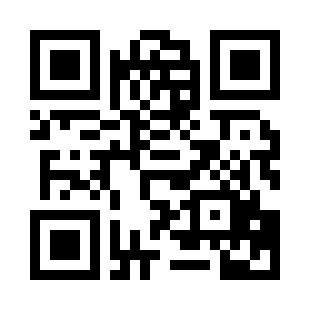
Another element of interaction was a QR code that we included in the middle of the smartphone motive. A QR code works in the same way that a barcode on a product works. It carries some information on it that can be read by a compatible device. Any modern smartphone can read these QR codes. Use of them is really simple: you just take a picture, and the phone will directly go to the webpage that is linked to the QR code. In our case, this was a Facebook page with additional information on fair trade. So any YMP could just take a picture of the QR code and would get additional information on the web.
3rd step - Designing the napkin
Design of the napkin is something that is, in most cases, outsourced to a graphic designer. Still, there are some general restrictions and tips that you can give to the designer when it comes to designing a napkin.
Not everything can be printed on napkins. Napkins are rather small and the structure of the napkin paper is very rough. Therefore the motives cannot be printed as precisely as on normal paper. If we choose too many small details on the napkins, these will not be readable anymore.
Include a bigger margin in the design.
Napkins are folded after being printed. Folding napkins is not as precise as folding other paper. So, the rim may vary from napkin to napkin, and if the motive is designed exactly up to edges of the napkins, folding will harm the appearance. As well, some napkins have a special texture at the rim which will produce bad quality in printing.
For these reasons it is better to leave a margin of around 1 cm to the edges of the napkin, because in these areas most printing color runs to the edges. Therefore, it is better to leave it blank.
4th step - Choosing locations
Locations for development education with interactive napkins
When choosing the right spot for distribution, again it is important to reflect upon how many YMPs are likely to visit this place. This will determine what kind of bar, cafe, restaurant, or cafeteria to choose for distribution. Also, permission is needed from the managers of these places. This can be tricky, especially when it comes to those places that YMPs visit regularly. Managers of these places are often not familiar with development topics and can be hard to convince. Also, some bars have contracts for advertisement with certain companies that also make use of articles such as napkins and beer mats, etc.
Strategy for addressing locations
In order to convince management of the locations, it is therefore good to wait until a really finished design is ready that you can present. This way, owners and management of the places you address will get a clearer picture of what you are offering. With a good design and interesting idea, many of them will be open to your idea – especially as it is free for them and even saves them money from buying napkins on their own.
With the smartphone napkin on fair trade, we decided to address cafeterias in technical universities. We chose this place because we found out that many YMPs are among students of technical sciences. Therefore, the cafeterias of technical universities are places with a high density of YMPs as a target group. Also, both universities we targeted offer fair trade coffee which was, in our case, another criteria of great importance (because otherwise the slogan on fair trade coffee would have been senseless).
For establishing contact, we first sent an information package to the cafeterias that included the design and a description of the action as well as a description of our organization. In a second step, we contacted them by telephone and talked about open questions. Finally we arranged a personal meeting with the management of the cafeterias.
5th step - Printing the napkins
Digital vs. flexo print
There are two methods for printing napkins. One is digital print, and the other is flexo print. In digital printing it works very much like we know it from our home printer. In flexo print the printing company will fabricate a metal plate as an image of your text or picture that it will use as a standard form for printing thousands of pieces with the same motive. So flexo print is a little more expensive at the beginning, but it will be much cheaper if we want to print many napkins.
Spending just a little more money here will allow you to print more pieces.
For example, in our case we had the choice of investing €500 and getting 500 napkins digitally printed.
With flexo print we needed to invest €800, but got 30.000 napkins for that price. So, for a little more budget we got a tremendously boosted number of napkins (30.000 instead of only 500).
A big package
Napkins are much bigger in dimensions per piece than a leaflet. Multiplied by a couple of thousand pieces, the napkins will come from the printer in many big packages, which will not fit in a single car, not to speak about carrying them. The best idea is to make arrangements with the bar, restaurant, or cafeteria and give the address of the place directly to the printing company for delivery.
6th step - Preparing online content
Any kind of online content can be linked to a napkin. A Facebook page is a good option to present online content for several reasons:
1.It is easy to set up. No special IT knowledge is needed to set up a Facebook page.
2.Spreading and interconnecting a Facebook page is very easy.
In our case, we used for the napkin a Facebook page that was also used for other development actions before. This way, YMPs who visited the page due to the napkin could not only read about fair trade coffee, but also about other topics of sustainability such as sustainable mobility, IT, etc.
